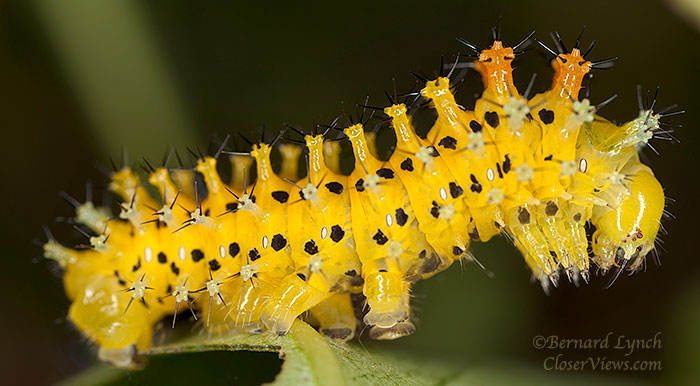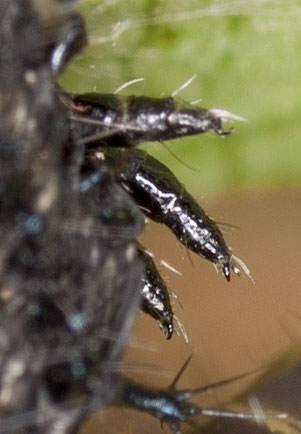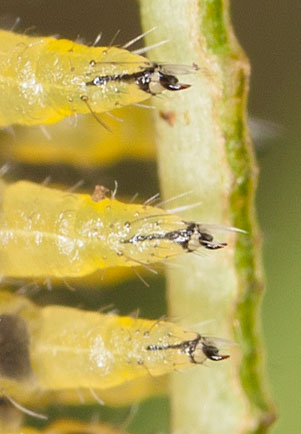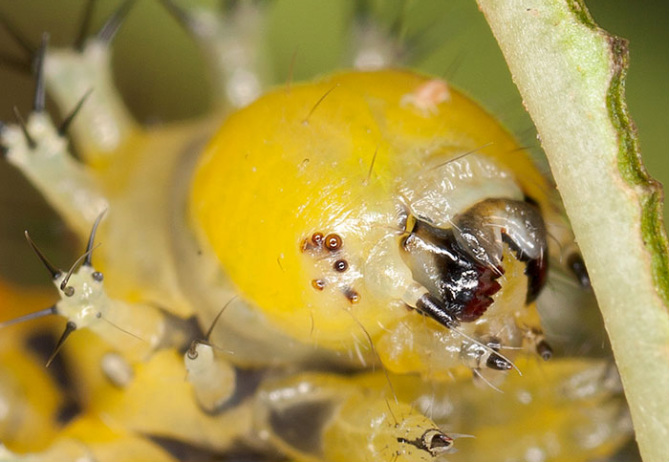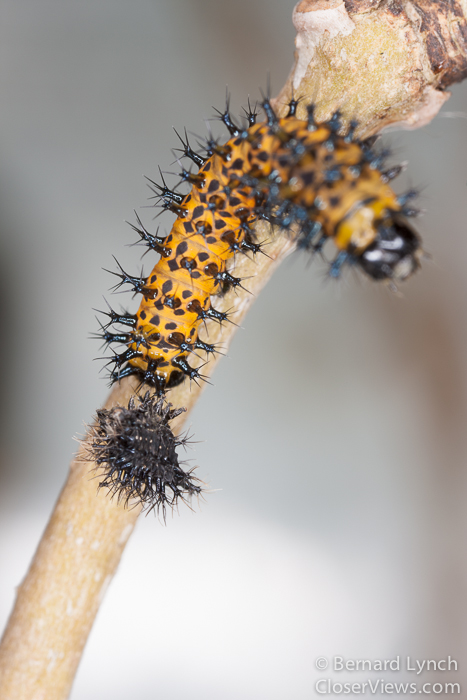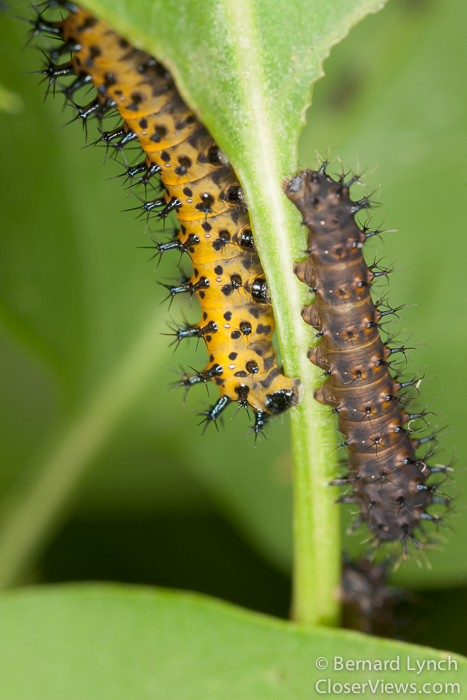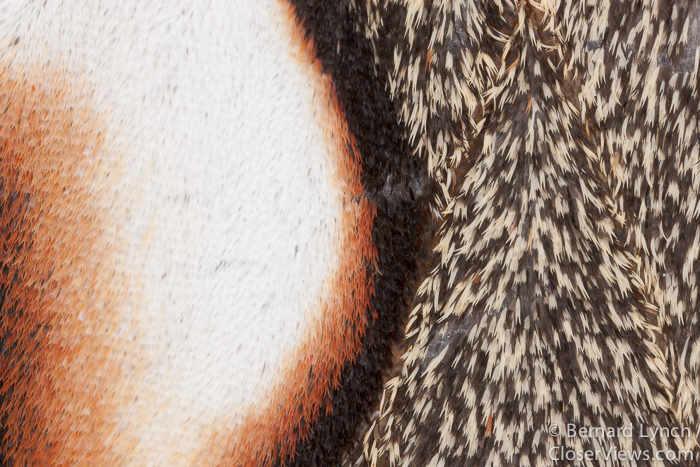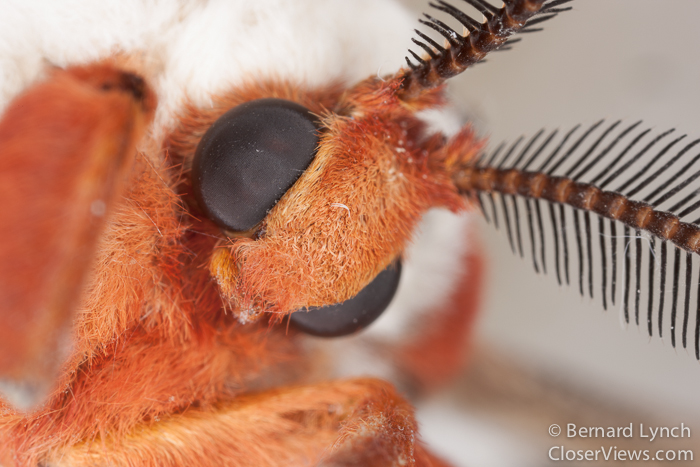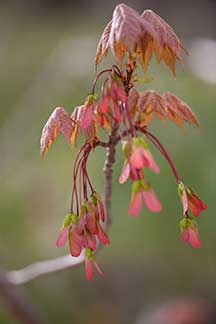The white breathing holes (spiracles) are clearly visible in this picture, between the black spots on it’s side.
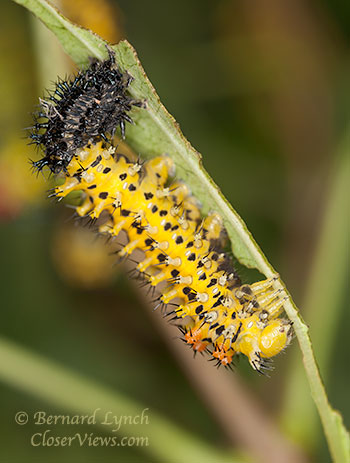
I caught this caterpillar working out of it’s old skin, begining the third instar phase. I came across it well into the process, but it still took several minutes to finish. It seemed to expand and contract it’s body in waves to push the old skin back and off. It finally cleared itself completely by curling into a tight “C”, pulling it’s rearmost portion out of the old skin.
I’m constantly amazed at the details I see through the camera when doing macrophotography.
I’m quite often surprised again when I edit the images! This series of shots, as the caterpillar worked it’s way out of it’s old skin, is one good example.
I had assumed only the skin was shed, but I see that the outer layer of the claws shed off, too!
The following six pictures are enlargements from portions of the full size images.
I was also surprised to find a mite crawling around on the shed skin as the caterpillar was working it off.
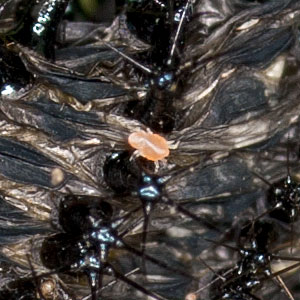
I don’t know if the mite is a parasite of the caterpillars, or if it just happened to be there -- or if they feed on the discarded skin. But, I will be looking for them in the rest of the images!
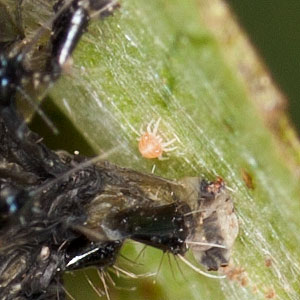
This is the same mite, later in the series of shots, as it crawled off the shed skin onto the lilac leaf the caterpillar was on.
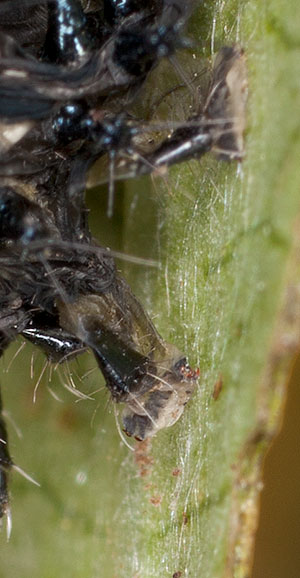
Did you also noticed what looks like fine hair on the surface of the leaf? They lay flat, though, unlike a leaf's protective hair. These are fine silk threads spun unto the leaf's surface.
They may have come from the caterpillar, though I didn't see them prepping the spot before shedding their skin.
More likely they are the anchor threads of small spiders that travelled the leaves before I brought them in from the lilac bushes.
The tiny claws of the rear prolegs are snagged onto them, making a good anchor to help pull the old skin off.
Here's a closeup of the head -- another crop of one of the full-size shots. You can clearly see the mouthparts and feelers that help guide the leaf into the serrated mandibles. The mandibles don't chew the leaf, but cut it into small crescent shaped pieces to be digested in the stomach.
The 5 simple eyes on this side of it’s head can also be clearly seen, since the black "eye spots" haven't developed yet.
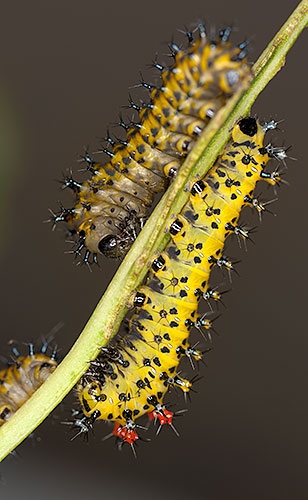
Here's how the late second and early third instars compare in size and coloration.
The third instar certainly looks more striking -- and formidable! The colors of the pedicles have darkened, the "eye" spots have appeared and the bright body color and four red pedicles behind the head stand out as a warning to larger predators.
Stay tuned for the next in the series, as the caterpillars continue to grow and begin to molt into the even more colorful fourth and final instar!
Please feel free to comment & let me know what you think of the series so far!

